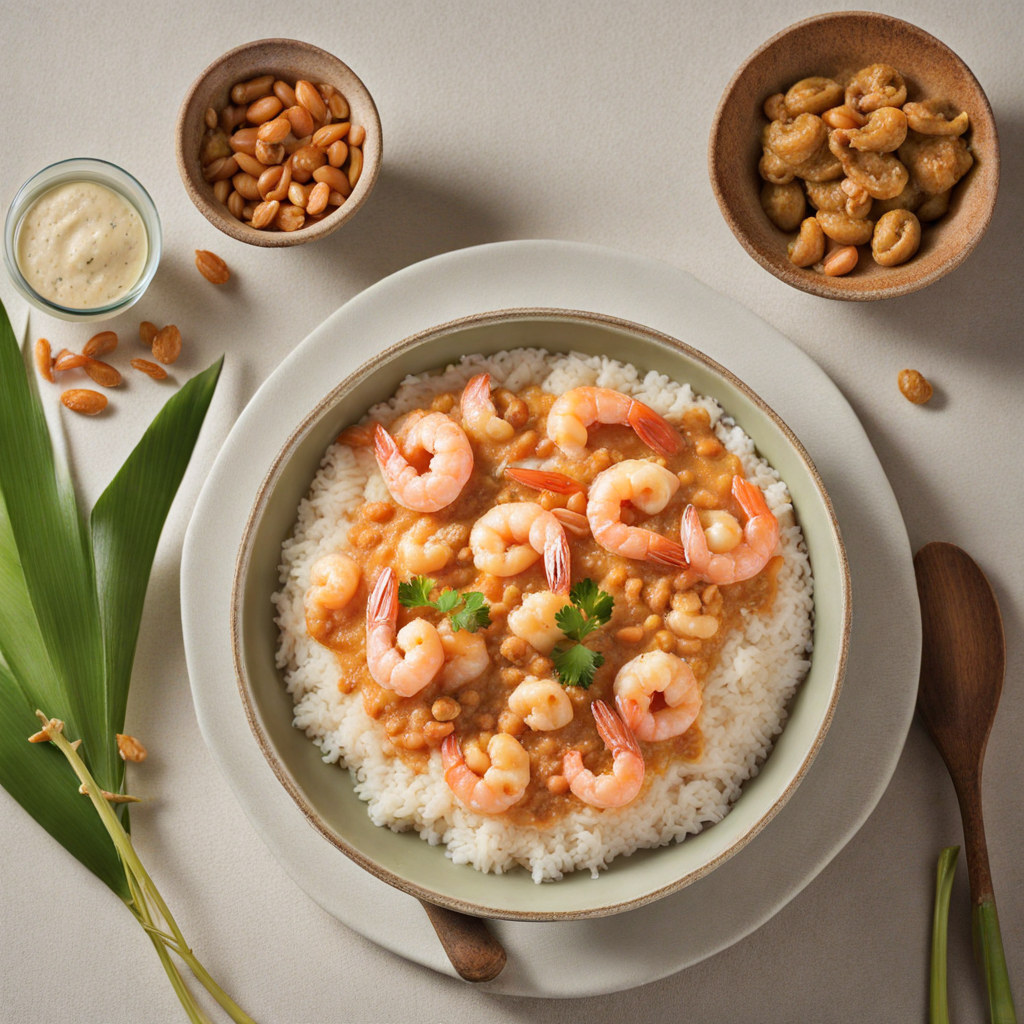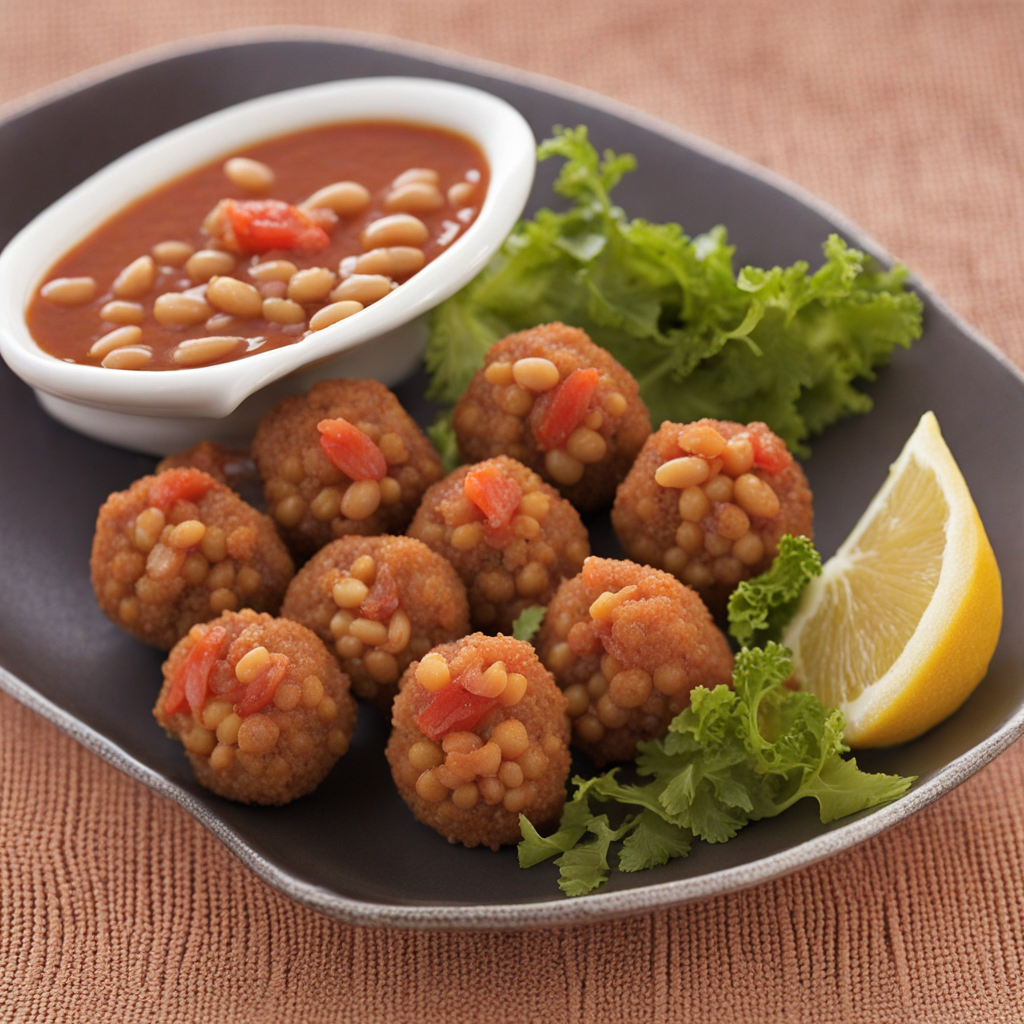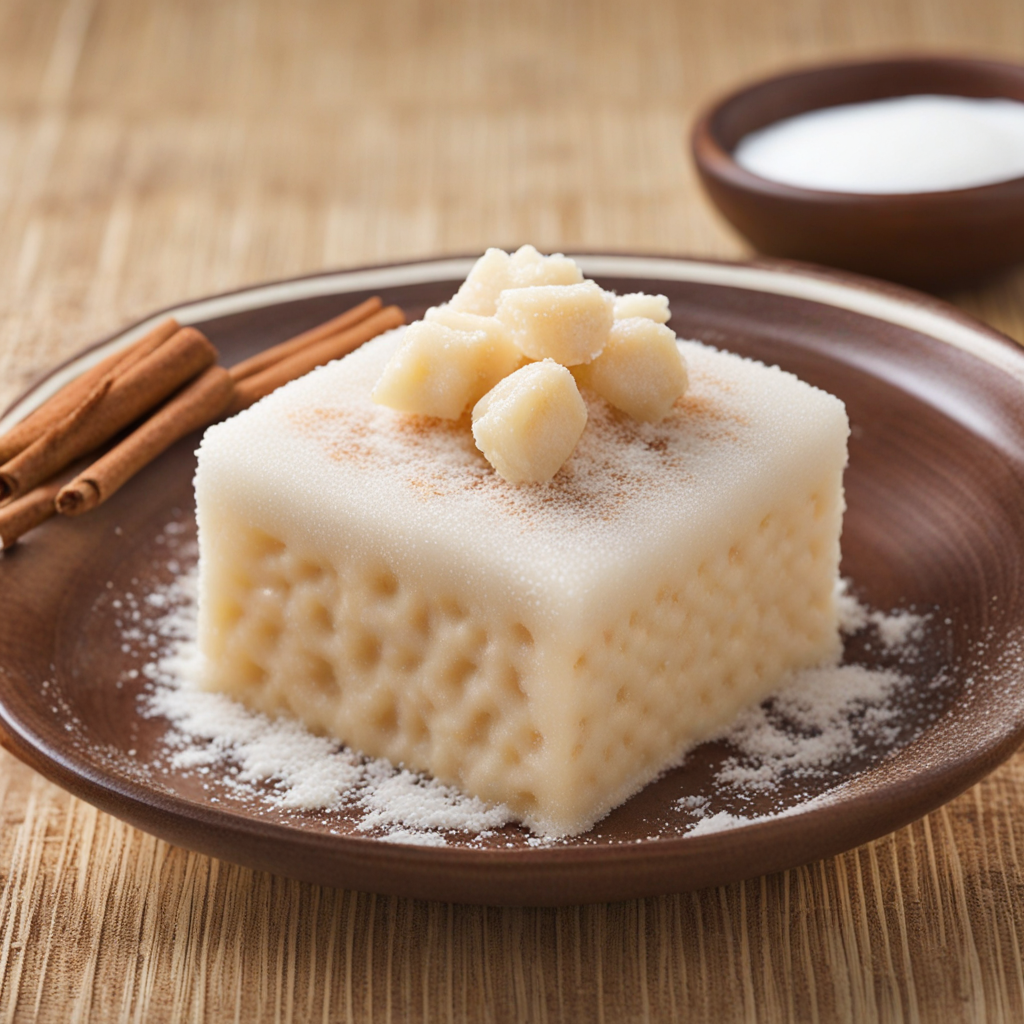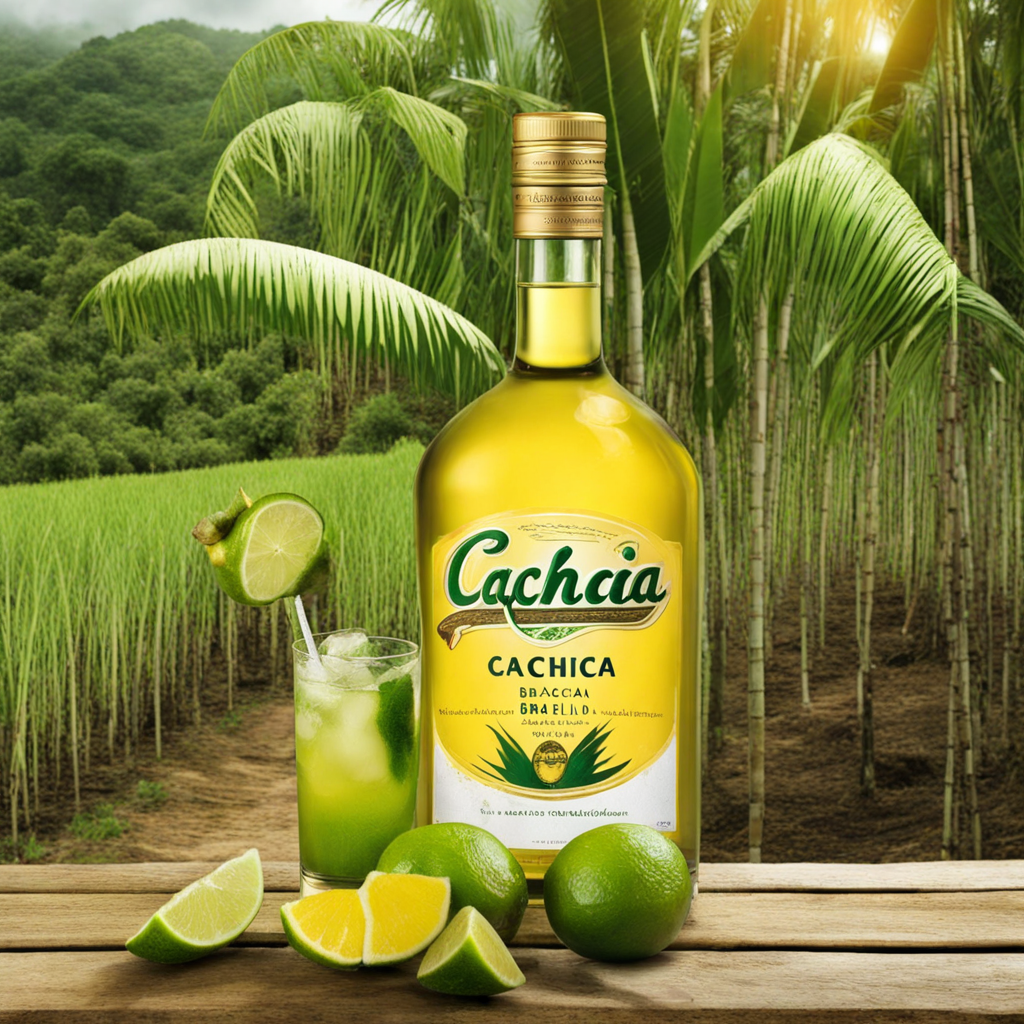Cuscuz Paulista
Cuscuz Paulista is a vibrant and flavorful dish that hails from the coastal region of Brazil, particularly popular in the state of São Paulo. This unique variation of couscous is made primarily from cornmeal, which is steamed to create a light and fluffy texture. The dish is often enriched with a medley of ingredients such as tomatoes, bell peppers, onions, and sometimes even carrots, which contribute to its colorful appearance and delightful taste. The combination of these vegetables not only adds a refreshing crunch but also infuses the couscous with a robust flavor profile that is quintessentially Brazilian. What truly sets Cuscuz Paulista apart is the way it is molded into a decorative shape, typically using a special mold or a simple bowl. Once cooked, it is often inverted onto a serving platter, revealing a stunning presentation adorned with layers of vegetables, herbs, and sometimes garnished with olives or boiled eggs. This artistic touch makes it a perfect dish for gatherings, celebrations, or simply a cozy family meal, inviting everyone to dig in and enjoy. In terms of taste, Cuscuz Paulista is a delightful amalgamation of savory and slightly sweet notes, with the cornmeal providing a gentle sweetness that complements the earthy flavors of the vegetables. It can be served warm or at room temperature, making it versatile for any occasion. Some variations include the addition of proteins like shredded chicken or seafood, enhancing its heartiness and nutritional value. Overall, Cuscuz Paulista is a dish that captivates not only with its stunning visuals but also with its rich, wholesome flavors, making it a must-try for anyone looking to explore the culinary treasures of Brazil.
How It Became This Dish
The Rich History of Cuscuz Paulista: A Brazilian Culinary Delight Cuscuz Paulista is a beloved dish that embodies the diverse cultural tapestry of Brazil, particularly in the state of São Paulo. This unique variation of couscous is deeply rooted in Brazilian culinary traditions, influenced by indigenous ingredients, African heritage, and European colonization. Its history is a reflection of the country's dynamic socio-cultural evolution, making it much more than just a dish—it's a story of resilience, adaptation, and identity. #### Origins: A Fusion of Cultures The origins of cuscuz, or couscous, can be traced back to North African cuisine, where it is traditionally made from semolina wheat and served as a base for various stews. The introduction of this dish to Brazil is attributed to Portuguese colonization in the 16th century. As the Portuguese settled in Brazil, they brought with them various food practices and ingredients, including wheat, which was not native to the region. However, cuscuz Paulista is distinct from its North African counterpart. The Brazilian version is primarily made from cornmeal, reflecting the influence of indigenous peoples who cultivated maize long before European arrival. The indigenous population utilized corn in numerous ways, making it a staple in their diet. The adaptation of couscous into cuscuz Paulista symbolizes the blending of indigenous agricultural practices with European cooking techniques. #### Ingredients and Preparation Cuscuz Paulista is typically made using a base of cornmeal, which is mixed with water and cooked to form a dense, moist cake. However, what sets it apart is the addition of a variety of ingredients that contribute to its rich flavor and texture. Traditionally, it includes vegetables such as tomatoes, onions, and bell peppers, along with proteins like shrimp, chicken, or sausage. The dish is often seasoned with herbs and spices, including coriander and black pepper, which add depth to its flavor profile. The preparation of cuscuz Paulista involves steaming the cornmeal mixture in a special mold called a "cuscuseira," which resembles a round cake. This method allows the dish to maintain its shape and develop a unique crumbly texture. Once cooked, it is often unmolded and served with a variety of accompaniments, including salads or sauces, enhancing its presentation and taste. #### Cultural Significance Cuscuz Paulista holds significant cultural importance in Brazil. It is more than just a meal; it is a symbol of celebration and community. The dish is often prepared for special occasions, family gatherings, and festive events, reflecting the Brazilian tradition of sharing food with loved ones. Its vibrant colors and hearty flavors make it a centerpiece at gatherings, inviting people to come together and enjoy a shared experience. In São Paulo, cuscuz Paulista is particularly popular, with street vendors and local restaurants offering their own variations of the dish. It is a staple in the city's culinary repertoire, representing the diverse influences that have shaped its gastronomic landscape. The dish has also become emblematic of the Paulista identity, showcasing the region's unique blend of cultural influences and culinary practices. #### Evolution and Modern Interpretations Over the years, cuscuz Paulista has evolved, adapting to contemporary tastes and preferences while still honoring its traditional roots. Modern interpretations often incorporate new ingredients, reflecting Brazil's increasing globalization and culinary experimentation. Chefs are now infusing global flavors into cuscuz Paulista, experimenting with gourmet ingredients like truffles or exotic spices, thus elevating the dish to new culinary heights. Additionally, the rise of health consciousness has prompted many to explore more nutritious variations of cuscuz Paulista. Whole grain cornmeal, organic vegetables, and lean proteins are now common substitutes, allowing health-conscious diners to enjoy this traditional dish with a modern twist. The resurgence of interest in traditional Brazilian cuisine has also sparked a renewed appreciation for cuscuz Paulista. Chefs and home cooks alike are celebrating regional ingredients and cooking methods, emphasizing the importance of preserving culinary heritage. This movement has led to the establishment of workshops and culinary schools that focus on teaching the art of making traditional Brazilian dishes, including cuscuz Paulista. #### Cuscuz Paulista in Popular Culture Cuscuz Paulista has made its mark not only on the dining tables of Brazil but also in popular culture. The dish is often featured in Brazilian literature and television, symbolizing comfort and nostalgia. Many Brazilians have fond memories associated with cuscuz Paulista, often recalling family gatherings where the dish played a central role in the celebration of life’s milestones. Furthermore, the dish has gained international recognition as Brazilian gastronomy has garnered attention on the global stage. Food festivals, culinary competitions, and international chefs have showcased cuscuz Paulista, introducing it to a broader audience. This exposure has not only elevated the dish’s status but has also highlighted the importance of Brazilian culinary traditions in the global food narrative. #### Conclusion: A Culinary Legacy Cuscuz Paulista is more than just a dish; it is a culinary legacy that encapsulates the essence of Brazilian culture, history, and community. From its origins as a fusion of indigenous and European influences to its modern interpretations, cuscuz Paulista is a testament to Brazil's rich gastronomic heritage. As it continues to evolve and adapt, this cherished dish remains a beloved symbol of togetherness, celebration, and the enduring spirit of Brazilian cuisine. In a world increasingly driven by fast food and convenience, cuscuz Paulista serves as a reminder of the importance of tradition, the joy of shared meals, and the cultural stories that food can tell. Whether enjoyed at a bustling street market in São Paulo or served at a family gathering, cuscuz Paulista invites us to savor not just its delightful flavors but also the rich history and cultural significance it carries. As we celebrate this dish, we honor the diverse influences that have shaped Brazil's culinary landscape, ensuring that cuscuz Paulista will continue to be a cherished staple for generations to come.
You may like
Discover local flavors from Brazil







